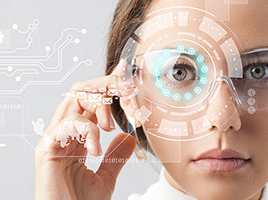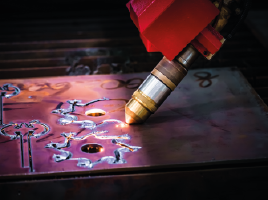IoT is now all around us. From consumer products to industrial, agricultural, medical and commercial, it’s changing the way things are done.

Most IoT devices, at the most basic level, are input and/or output devices that are connected to the internet. The input devices are designed to generate data—cameras produce images in the form of data. Microphones digitize audio as data files. A wide variety of specialized sensors generate data. At the output end, IoT devices can perform an immeasurable range of tasks: A robot can perform complex actions (even surgery when guided by a human surgeon); a speaker can respond to a question or generate verbal instructions; a drone can be controlled by an expert on the ground or in a control room; a door may remotely shut and lock if an intruder is detected.
For IoT devices to provide value beyond passively streaming data to the internet though, intelligence must be built into the device. A camera that just sends a constant stream of video isn’t adding much value. In fact, if you multiply a single camera by the thousands that may also be streaming continuous data, you can end up overwhelming the internet backbone with video images that are of little value. Yet when you add intelligence to the camera—making it a smart camera (enabling computer vision)—configuring it to monitor an area of interest, recognizing the things that it’s programmed to identify, and sending aggregated data at specific intervals (rather than continuously streaming video), you’ve made the camera more valuable.
Similarly, when you enable IoT devices to analyze and operate on the incoming data, the value increases exponentially. Industrial IoT (IIoT) has been around many years. It’s being used on shop floors, controlling robotic manufacturing equipment. It’s being used for visual inspection of parts. One of the key features of IoT and IIoT devices is that they don’t just collect data, they do something with the data. Another key feature is that they can be controlled over the internet.
IoT and IIoT devices are now able to produce usable data and perform tasks in hours or days that used to take weeks to accomplish. For example, Nature Fresh Farms, a company that grows a variety of produce in a 130-acre greenhouse facility, has embraced IoT in its operations. Picked produce is placed on a sorting line. As it passes through the line, an IoT camera that is connected to the internet takes pictures of everything passing by. The pictures are then run through a computer, powered by Intel, and automatically sorted. With intelligent pre-sorting of the produce, the company reports, packaging times have dropped from 35 to 45 seconds down to eight seconds.
A greenhouse automation software system is fed data by IoT sensors that are designed to monitor internal and external temperatures and track weather conditions. Additionally, the software controls the delivery of water and fertilizer, using internet-controlled IoT watering systems. Real-time monitoring, using IoT devices, and a high-performance computer have provided more information about the produce and the greenhouse operation, and have increased product yield while also boosting productivity per employee.
In another example, a product called Robovator is designed to detect and eliminate weeds. The device passes through rows of produce, as a camera scans each row. The image is processed, in real time, and if a weed is detected, the weed is removed or sprayed with a chemical that kills it. Being able to detect and remove weeds this way has reportedly saved a third of the time that was previously required to weed an area.
Field sensors are IoT devices that detect such factors as air temperature, soil temperature, wind and rain. New software rapidly processes this information and can advise a farmer when to fumigate or how much to irrigate in real time. The rapid data acquisition that is enabled by IoT thus enables farmers to increase their produce yields.
IoT Transforming Industries
There are dozens of examples of how IoT and IIoT have improved agriculture and other industries. From automated inventory management systems that use IoT to scan items on shelves more rapidly than any human employee can, to drones with smart cameras that can scan and detect errors in fields of solar panels, to robots that can be used to pick and sort produce, organizations have benefited from the ability to get real-time data from IoT devices. The availability of IoT data can reduce cost, increase accuracy and increase efficiency.
When paired with high-performance computing components, like field programmable gate array (FPGA) chips that are extremely fast and easily reprogrammed to perform new tasks, IoT will change agriculture, medicine, manufacturing, sales and many other businesses for the better.






